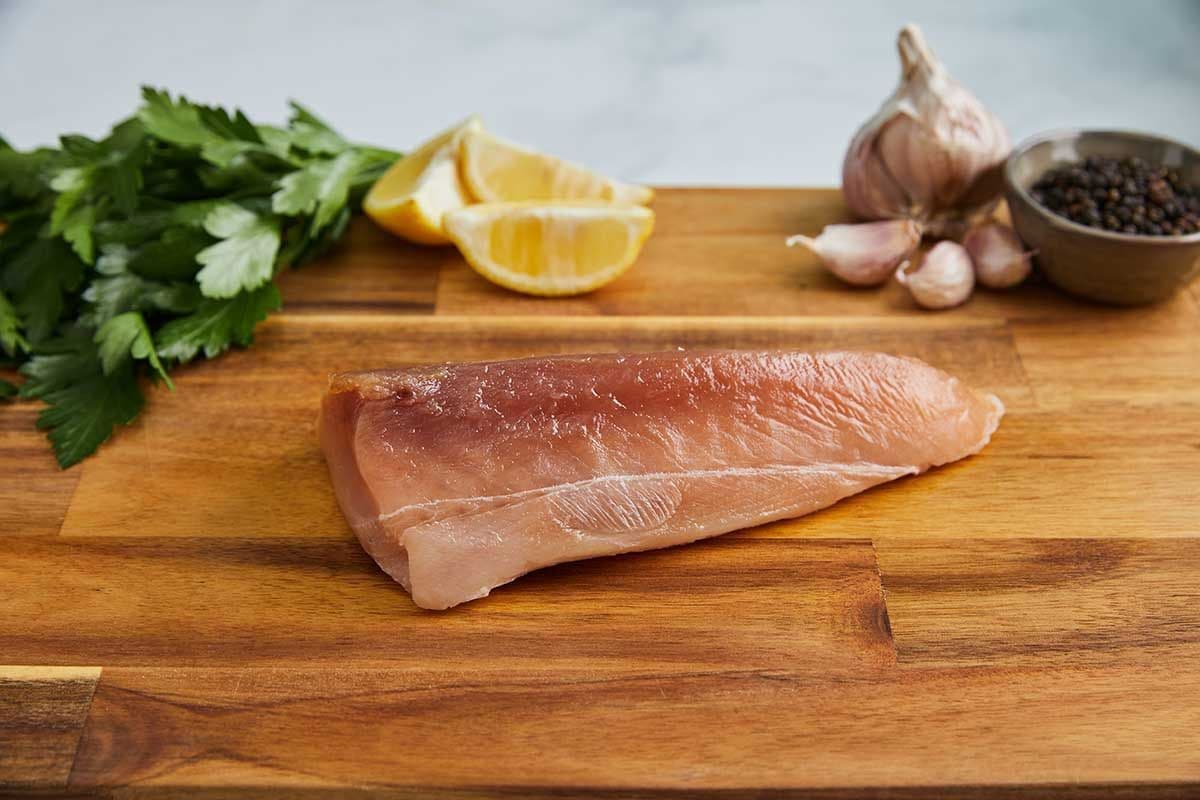I enjoy a tuna melt as much as the next person.
But growing up in Alaska, I hadn’t tasted an albacore loin until I was gifted albacore as part of my monthly employee fish box (a serious job perk).
After dutifully following Culinary Director Grace Parisi’s recipe for her Pepper-Crusted Tuna Niçoise, my first bite of seared albacore opened my eyes to a completely different fish from the one I'd come to associate with a tin can.

To start, I learned that only the tuna that are handled with the most rigorous quality standards are sold as loins. In fact, according to one industry official 75% of all the tuna caught on the West Coast is canned. But it’s more than that. Honestly, I altogether underestimated tuna. Not only as a food, but as a wild animal.
Here are a few facts I learned about albacore that left me gobsmacked:
They’re (semi) warm-blooded. Amazing.
Their tails thrum against the deck of a boat faster than I can tap my fingers, which sounds to me like a woodpecker drumming.
They travel in schools that can span up to 19 miles wide. After a quick Google search, I discovered that 19 miles is wider than the widest point of the Mississippi River.

Pop quiz: How wide is the Mississippi at its widest point?
The Quick Google Answer (QGA): 11 Miles! This occurs where Mississippi flows through Lake Winnibigoshish (Minnesota's fourth-largest lake).
Or, to picture it another way, if you were to traverse a large school of tuna (skipping atop their long fins perhaps?), you would run more than the distance of a half marathon. You would have to be running exceptionally fast, though, because albacore can swim up to 50 miles an hour.
They do, after all, have a lot of distance to cover. Their annual migration includes leaving the coast of Japan around April or May and swimming the entire width of the Pacific Ocean. They arrive off the coast of the Pacific Northwest typically around June or July where they stay and feed until October at which point they return to Japan for the winter.
In short, albacore are hot-blooded, free-ranging wild animals that travel in flickering packs across tremendous distances and deserve greater respect than is afforded them by the universal tuna salad sandwich.

However, if you were to go to your local grocery this evening and look for albacore, you would likely see “White Tuna” written on the tin — one of the many opaque particularities that causes confusion for tuna consumers and prevent them from learning about these powerful fish.
So, I put together this quick list to help you learn about your tuna in three steps:
1. Know what to look for when you're shopping for tuna.
2. Understand how they're caught and processed for quality.
3. Read about sustainable sourcing and why it matters.
Even better, go to the source and listen to the experts firsthand! You can learn about the wild world of tuna on our FishTalk podcast with author Paul Greenberg.



